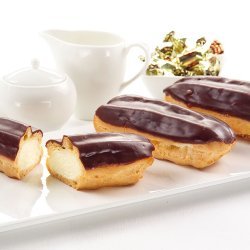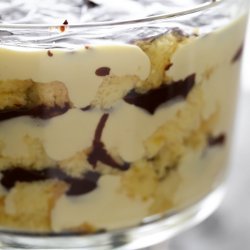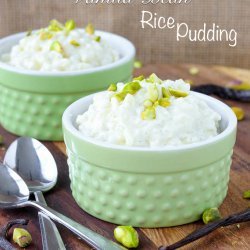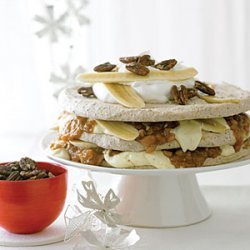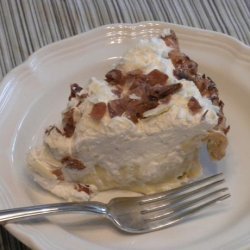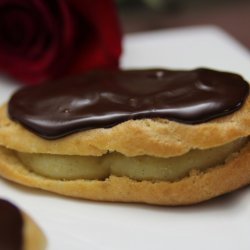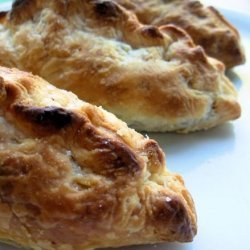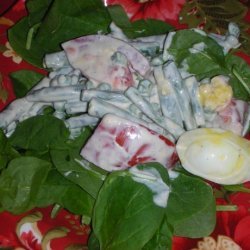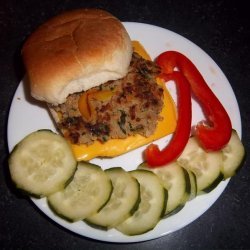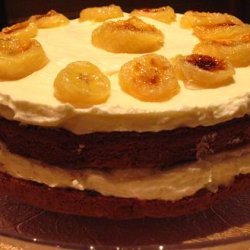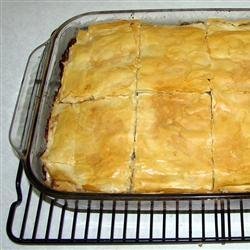Directions:
- For the Classic Puff Pastry: Place the flour, salt, melted butter, and most of the water in the bowl of a stand mixer fitted with the paddle attachment. Mix on medium speed for about 1 minute. Stop the mixer as soon as the ingredients begin to form a dough and pull away from the side of the bowl. If the dough appears too dry and does not come together, add the remaining water and mix just until combined. Do not over mix or you will over-develop the gluten. It is very important to keep gluten development to a minimum in this recipe, or the finished puff pastry will be tough and chewy instead of delicate and crispy. Remove the dough from the mixer and pat it into a 5-inch square about 2-inches thick. Wrap the dough completely in plastic and let it rest in the refrigerator for 2 hours. Resting the dough allows the gluten strands that have developed to relax.
- Work the cold butter into a square that is about a third smaller than the dough square, and about 1-inch thick. Place the butter on a lightly floured work surface and, keeping it square shaped, use a rolling pin to give it a few quick raps. This will soften the butter. It should be about the same consistency as the puff pastry dough. Lightly flour the butter and rolling pin as needed to keep it from sticking.
- Remove the dough from the refrigerator and place on a lightly floured work surface. Use the rolling pin to make a mark about 1-inch from each corner of the dough. Roll only this part of each corner away from the center of the dough until it is 1/4-inch thick. The center of the dough should be about 1-inch thick. Place the butter square in the center of the dough square. Pull the rolled-out corners up and over the butter, completely enclosing it in a dough package. When the butter has been added, the dough is referred to as a paton.
- The paton is now ready to be folded. You will need to give the dough six single folds, allowing the dough to rest in the refrigerator for at least 2 hours after every 2 folds. To begin, use a rolling pin and roll the paton into a 10 by 23-inch rectangle. Try to keep it an even thickness. Place the dough horizontally in front of you so it will be easier to fold. Fold the dough in thirds by first folding the left end over the middle and then folding the right third over it. Rotate the dough to make sure the seam is on your right. This is known as a single fold, or a letter fold because it resembles the way a letter is folded. Repeat the single fold starting with a 10 by 23-inch rectangle placed horizontally in front of you. To show that you have folded the dough two times, make two indentations in the dough with your fingertips. At this stage, the puff pastry must be kept well wrapped in the refrigerator for a minimum of 2 hours or up to 1 day.
- Remove the dough from the refrigerator and give it the final two folds, starting each time with the 10 by 23-inch rectangle. Let the dough rest in the refrigerator for at least one hour before using. Then it will be ready to be rolled and formed into the shape required. The finished puff pastry will keep, well wrapped in plastic wrap, in the refrigerator for one day or in freezer for up to two months.
- Preheat the oven to 400 degrees F. On a lightly floured work surface, roll the puff pastry into a 6 by 12-inch rectangle 1/8-inch thick. Place on a parchment-lined sheet pan and place another sheet pan on top of it. Bake between the 2 sheet pans until it barely begins to take on color, about 10 minutes. The puff pastry may rise unevenly in sections. If that happens, release the air by gently piercing the dough with the tip of a paring knife. Mix the corn syrup and water together. Remove the puff pastry from the oven and brush the top with the corn syrup mixture. Cover with another sheet of parchment paper and flip over the puff pastry. Peel off the parchment paper that is now on top and brush this side with the corn syrup mixture.
- Using a sharp paring knife and a plate as your guide, cut about a 10-inch circle from the half-baked puff pastry. Discard the excess dough. I cut the circles when the dough is half-baked so they will keep their shape. Reduce the oven temperature to 350 degrees F. Place the puff pastry circle back in the oven and continue to bake until crispy and golden brown, about another 15 minutes. Remove from the oven and place on a wire rack until completely cooled.
- For the Chocolate Pastry Cream: Sift together the cornstarch and 1/4 cup of the sugar in a medium-sized mixing bowl. Add the egg yolks and whisk until well combined. Pour the milk and the remaining 1/4-cup sugar into a 2-quart saucepan and place the saucepan over medium-high heat. While the milk is heating, use a sharp knife to slice the vanilla bean in half lengthwise. Separate the seeds from the outside skin by scraping the blade of the knife along the inside of the bean. Add the seeds and the skin to the heating milk and bring to a boil.
- Temper the egg mixture with the hot milk by carefully pouring about half of the milk into the egg mixture. Immediately whisk to prevent the eggs from scrambling. Pour the tempered egg mixture into the saucepan and continue to whisk. Continuously whisk to ensure that the mixture cooks evenly. Once the pastry cream has come to a boil, continue to whisk and cook for another 2 minutes to fully develop the flavor of the pastry cream and to cook out the flavor of the starch. Remove the pan from the heat. Strain the pastry cream through a fine-mesh sieve to remove any pieces of cooked egg and the vanilla bean. If you would like to add butter, this is the time to do so. Add the bittersweet chocolate and stir until it is well incorporated. Pour the pastry cream into a clean, airtight container and place a piece of plastic wrap directly on top of it to prevent a skin from forming. Let cool at room temperature, then store in the refrigerator for up to 2 to 3 days, until ready to use.
- For the Pate a Choux: Preheat the oven to 400 degrees F. Place the water, salt, sugar, and butter into a 4-quart heavy-bottomed saucepan over medium-high heat and bring to a boil. The butter should be completely melted by the time the mixture boils. Remove the saucepan from the heat, add the bread flour all at once, and incorporate it thoroughly with a wooden spatula.
- Return the saucepan to the stove and cook over medium heat for about 3 minutes to dry out the paste. As it cooks, move the paste from side to side in the saucepan with the wooden spoon. Turn it over onto itself to allow every side to touch the bottom of the saucepan, allowing it to dry, however, keeping it moving all the while or it will burn. You will know the paste is dry enough when it begins to leave a thin film on the bottom of the saucepan.
- Remove the saucepan from the heat and transfer the paste to a large mixing bowl. Mix with an electric mixer on low speed for about 2 minutes to release some of the steam. This will prevent the eggs from cooking and scrambling when combined with the paste. Continue to mix and slowly add the eggs one at a time, incorporating well after each addition. After each egg is added, the paste will become loose and look separated, which is okay. Once each egg is well incorporated, the paste will become smooth and homogenous again. The number of eggs you will wind up using will vary depending on the size of the eggs and how well the pate a choux is dried. The drier it is, the more eggs you will need. After you have added 4 eggs, check the consistency by scooping a large amount of the paste onto a wooden spoon. Hold the spoon horizontally about one foot above the bowl and watch as the batter falls from the spoon back into the bowl. If it is pale yellow, smooth, moist, slightly elastic, sticky, and takes about 5 to 7 seconds to fall into the bowl, it is ready. If it appears rough, dry, and falls into the bowl in one big ball, it needs more eggs. Add another egg and check the consistency again after it is well incorporated. If necessary, add one more egg. If the pate a choux is too dry, it will not pipe well. If it is too wet, it will be loose and runny, and won't hold its shape.
- Place the batter into a pastry bag fitted with a 1/2-inch straight tip. Pipe the batter into 1 1/2-inch mounds on a parchment lined sheetpan about 1 1/2 inches apart as they will spread slightly when baked. Using the same plate as a guide from the puff pastry, trace a ring onto a piece of parchment paper. Flip the paper over and pipe a ring of choux batter along the line that is about 1 1/2 inches wide.
- Bake the choux for 15 minutes, then reduce the oven temperature to 350 degrees F and bake until golden brown and dry on the inside, about 15 minutes more. To help the choux dry, you can open the oven door during the last 5 minutes of baking to let out the steam.
- For the Caramel: Place the sugar, corn syrup, and water in a 1-quart heavy-bottomed saucepan over medium-high heat and cook until light golden brown. When the desired color is reached, remove the pan from the heat and carefully pour into a medium-size glass bowl. If you leave the sugar in the pan, the sugar will continue to cook and turn dark brown, whereas a glass bowl will hold the temperature of the sugar.
- To assemble the St. Honore, divide the chocolate pastry cream in half. Reserving a small amount of whipped cream for decoration, mix the rest with one half of the pastry cream creating a lightened version. Dab the bottom of the choux ring with the caramel and set on the puff pastry circle. Cut 4 puffs in half and using caramel, glue the puff bottoms to the top of the ring, spacing them equally. Dip the tops of the puffs in caramel and set aside. Pipe the chocolate pastry cream into a mound in the center of the ring. Using a star tip, cover the mound with lightened chocolate pastry cream in straight lines, starting at the center and moving outward. Pipe the lightened chocolate pastry cream into each puff bottom. Place the puff tops on the filled puff bottoms. Place one more caramel-dipped puff at the top of the dessert. Decorate with whipped cream by making rosettes or trails of whipped cream from top to bottom.
Nutrition Facts
| Amount Per 1 Serving | |||
| Calories | 725.54 Kcal (3038 kJ) | ||
| Calories from fat | 327.33 Kcal | ||
| % Daily Value* | |||
| Total Fat | 36.37g | 56% | |
|---|---|---|---|
| Cholesterol | 208.73mg | 70% | |
| Sodium | 568.38mg | 24% | |
| Potassium | 179.98mg | 4% | |
| Total Carbs | 90.03g | 30% | |
| Sugars | 45.18g | 181% | |
| Dietary Fiber | 1.64g | 7% | |
| Protein | 11.96g | 24% | |
| Vitamin A | 0.4mg | 13% | |
| Iron | 3.4mg | 19% | |
| Calcium | 97.2mg | 10% | |
| Amount Per 100 g | |||
| Calories | 275.7 Kcal (1154 kJ) | ||
| Calories from fat | 124.38 Kcal | ||
| % Daily Value* | |||
| Total Fat | 13.82g | 56% | |
|---|---|---|---|
| Cholesterol | 79.31mg | 70% | |
| Sodium | 215.98mg | 24% | |
| Potassium | 68.39mg | 4% | |
| Total Carbs | 34.21g | 30% | |
| Sugars | 17.17g | 181% | |
| Dietary Fiber | 0.62g | 7% | |
| Protein | 4.55g | 24% | |
| Vitamin A | 0.1mg | 13% | |
| Iron | 1.3mg | 19% | |
| Calcium | 36.9mg | 10% | |
* Percent Daily Values are based on a 2000 calorie diet. Your daily values may be higher or lower depending on your calorie needs.
Find out how many calories should you eat.
Get Your Recipe of Health!
Follow RecipeOfHealth on Facebook!



